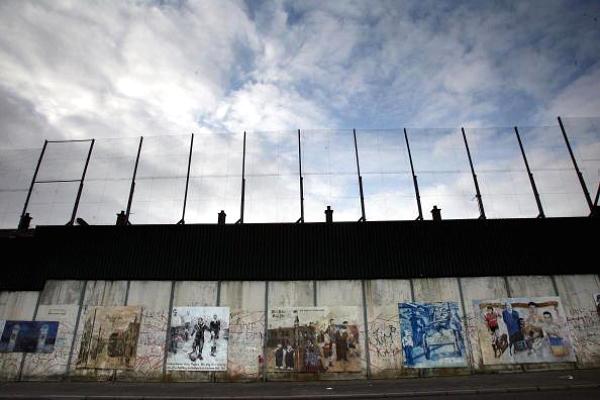
Christopher Furlong | Getty Images
The ‘Peace Line’ fence is seen on February 9, 2005 that stretches between the Catholic and Protestant areas of West Belfast, Northern Ireland.
The lengthy Northern Irish guerrilla war over the province’s constitutional status saw more than 3,500 people lose their lives in bombings, indiscriminate shootings and assassinations carried out by both Irish nationalist and Northern Irish loyalist paramilitaries like the Irish Republican Army and the Ulster Volunteer Force, among others. British troops were deployed to the conflict as well.
Northern Ireland’s majority Protestant population, which largely identified as British, had no desire to live as a religious minority under an Irish government. Meanwhile, Catholics living in the northern province, who saw themselves as Irish, suffered persecution at the hands of Northern Irish authorities and sought a united Ireland free from British rule.
“What you got with the peace agreement was an agreement on the systems and institutions of government,” Sheridan said, describing the Good Friday Agreement’s fundamental achievement of a power-sharing system for the region’s political and religious groups.
“The question is how do you underpin that politically, by normalizing relations in society where people who were former enemies learn to live together as citizens? That’s what we needed to be doing next.”
Some 95 percent of social housing in Northern Ireland is segregated along religious lines, Sheridan explained. And only 6 to 7 percent of children and adolescents attend integrated schools.
The New York Times reported that a new integrated housing development built in a Protestant area has only led to Catholics being intimidated out of their homes — at least 30 people are left homeless annually for this very reason, the NYT discovered.
“Some paramilitary organizations still have coercive control and influence over some communities,” Sheridan pointed out. “You have to ask, what are they doing around 20 years after the ceasefires?”
 EU News Digest Latest News & Updates
EU News Digest Latest News & Updates


